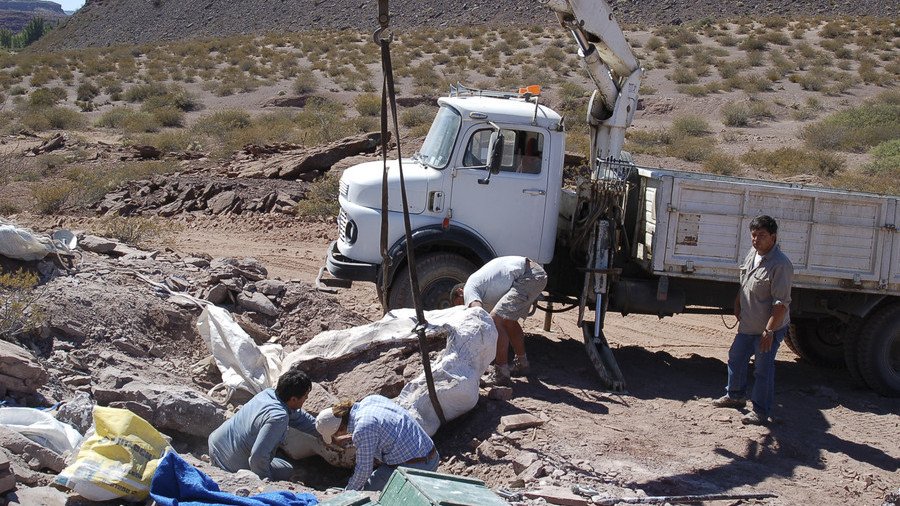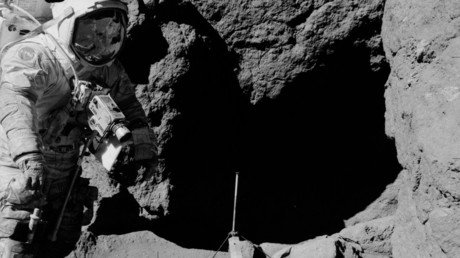New giant dinosaur species unearthed in Argentina

Three well-preserved specimens of a new gigantic dinosaur species, named Lavocatisaurus agrioensis, have been discovered by a multinational team of scientists in the Argentine province of Neuquén.
The remains an adult and two juveniles reptiles which roamed the Earth some 110 million years ago, were unearthed by a team of Argentine and Spanish paleontologists. The new species, which the discoverers named Lavocatisaurus agrioensis were herbivorous and belonged to Sauropods saurischian clade of dinosaurs with very long necks, long tails, and a small head.
In addition to parts of the neck, tail and back, the team found “most” of the cranial bones, including the snout, the jaws, and teeth, making it possible to create an “almost complete reconstruction,” noted Jose Luis Carballido, a researcher at the Egidio Feruglio museum and the national council of scientific investigations.
The fossils showed the adult dinosaur to be 12 meters in length, while the young lizards, scientists believed, measured between six and seven meters long.
The scientist believes that the species has moved around and died together in a group from circumstances yet known to the scientific community. Desert conditions of the topography at that time could have contributed to their demise as herbivores need an abundance of flora and water to sustain their existence.
“While one can imagine that this group of sauropods could have adapted to move in more arid environments, with little vegetation, little humidity and little water, it’s an area in which you wouldn’t be looking for fossils,” said Carballido.
If you like this story, share it with a friend!














